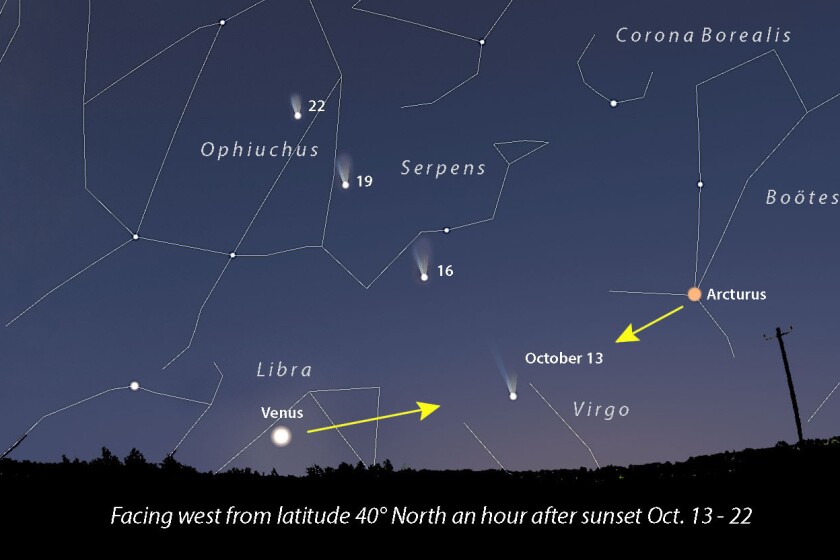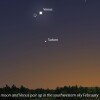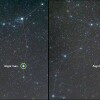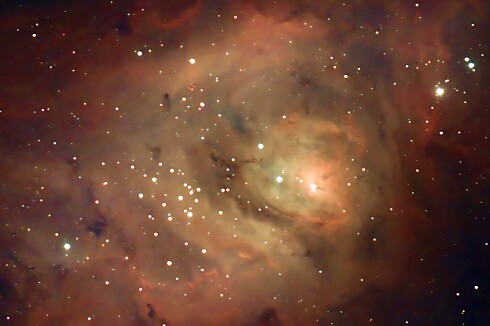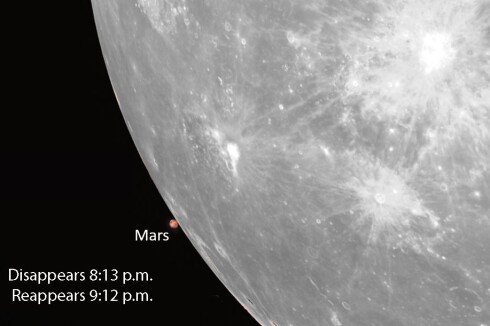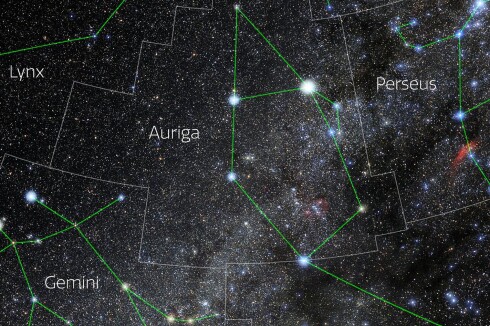We have high hopes this month for Comet Tsuchinshan-ATLAS. It’s pronounced choo-cheen-SHAHN and means Purple Mountain in Chinese. The name refers to Purple Mountain Observatory in China where it was discovered in January 2023. The ATLAS telescopic survey of the night sky co-discovered the comet.
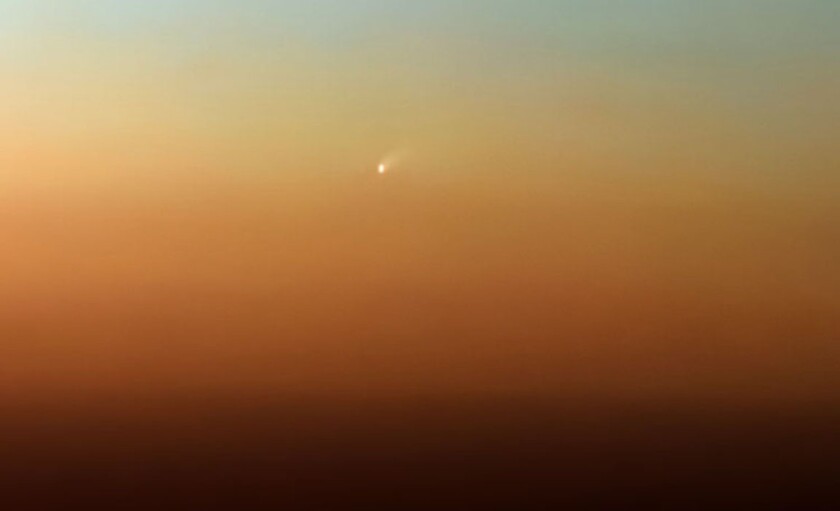
After a brief morning-sky appearance last month, it begins its run in the evening sky starting about an hour after sunset at dusk. Look for the comet starting about Oct. 12 or Oct. 13 very low in the west-southwest sky below the bright orange star Arcturus and to the right of Venus. You should see a small, bright head with a plume-shaped tail about a fist long pointing up and away from the horizon.
ADVERTISEMENT
Comet T-A will gradually climb higher and higher up the sky each night. Although it will fade, its increasing altitude will make it easier to spot. Bring binoculars to battle haze or light pollution and to see additional details in the comet’s tail. They’ll be especially helpful in digging the comet out of the twilight glow.
Venus still hovers low in the southwestern sky at dusk a half-hour to 45 minutes after sunset. Saturn is comfortably high up in the southern sky as soon as it gets dark and stands due south around 10 p.m. local time at mid-month. Brilliant Jupiter glares from low in the northeast around 10-11 p.m. followed an hour later by Mars.
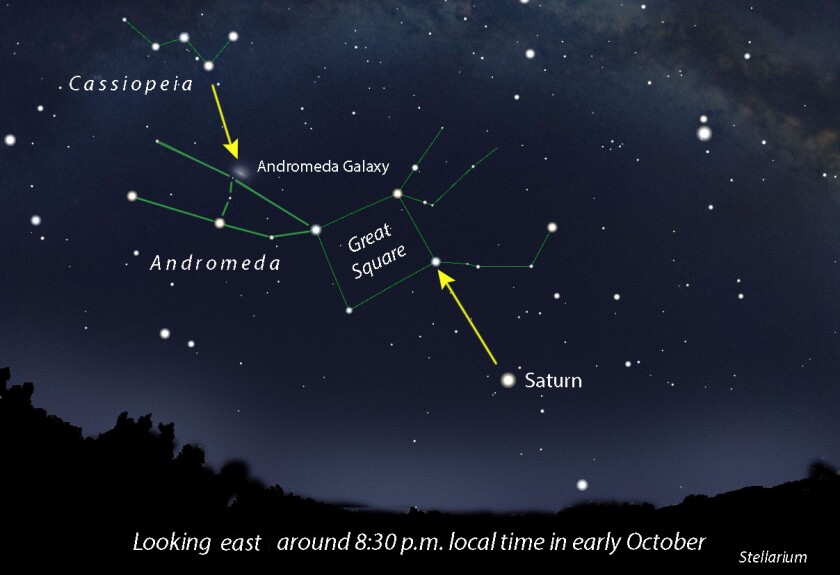
Our featured constellation is Andromeda the Princess, daughter of Queen Cassiopeia and King Cepheus. Andromeda nearly lost her life to the sea monster Cetus as punishment for her mother’s vanity. Luckily, Perseus entered the picture and promised to save her in exchange for her hand in marriage. Our hero vanquished the beast and the two lived happily ever after, their story written in the stars for all to see.
Andromeda is shaped like a bent carrot or a long, narrow funnel. You can find it by using Saturn to point to the Great Square. The star in the upper left corner of the square is actually part of Andromeda and a good place to start connecting the dots (stars) that outline the constellation.
The top of Cassiopeia also points to Andromeda and in particular to a puff of faint haze, the Andromeda Galaxy. From a moderately dark sky, it's easily visible in binoculars on moonless nights, its light softly beaming toward us from 2.5 million light-years away. Both the Milky Way and Andromeda are being pulled toward each by their gravitational attraction on one another. Astronomers predict they'll merge into a single titanic galaxy in about 5 billion years.
Download the free Stellarium Mobile app for Android and iPhone to help you find and identify the planets, constellations and Comet Tsuchinshan-ATLAS, which is included in its database. Do a Google search then install the app, set it in night mode (red screen) and point your phone skyward. For a free October sky map and calendar go to www.skymaps.com/downloads.html
October 2024 night sky happenings
ADVERTISEMENT
Events (a.m. indicates the event happens in the morning sky):
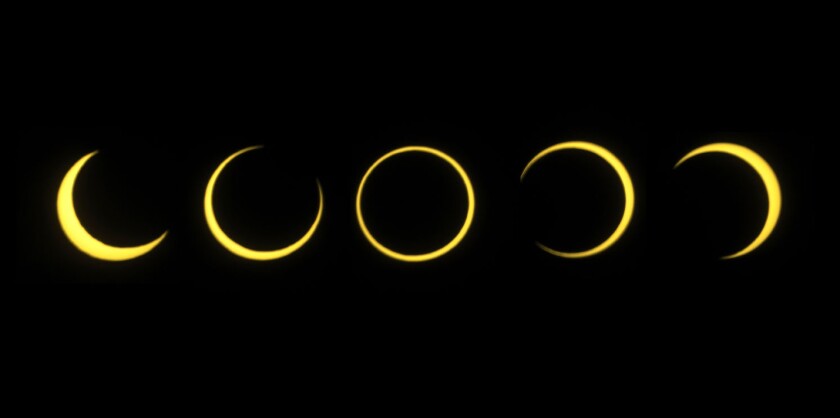
Oct. 2 – New Moon. Observers in parts of South America will see an annular solar eclipse today. An annular or ring eclipse occurs when the moon is more distant from the Earth than average, which its apparent size smaller. When it passes centrally across the sun in an annular eclipse the lunar disk can’t quite cover the entire sun, leaving a ring, or annulus, of sunlight at mid-eclipse. A partial solar eclipse will be visible in parts of South America, Antarctica, Hawaii and part of the Baja Peninsula. See it livestreamed at timeanddate.com/live/eclipse-solar-2024-october-2 starting at 1:45 p.m. CDT.
Oct. 5 – Thin crescent moon in conjunction with Venus low in the southwestern sky around 30 minutes after local sunset. Use binoculars. The moon will shine about 4 degrees to the lower left of Venus.
Oct. 10 – First quarter moon. While half the moon is illuminated tonight, it’s completed just a quarter of its orbit around the Earth, hence the name.
Oct. 13–31 – Comet Tsuchinshan-ATLAS should be visible with the naked eye low in the southwestern sky during evening twilight and sport a longish tail, especially when viewed in binoculars. I’ll post updates and photos on my Facebook page at facebook.com/astrobobking The most important thing you’ll need is an unobstructed view to the west-southwest as the comet will hover very low in that direction until the third week of October.
Oct. 14 – Waxing gibbous moon shines to the left of Saturn tonight.
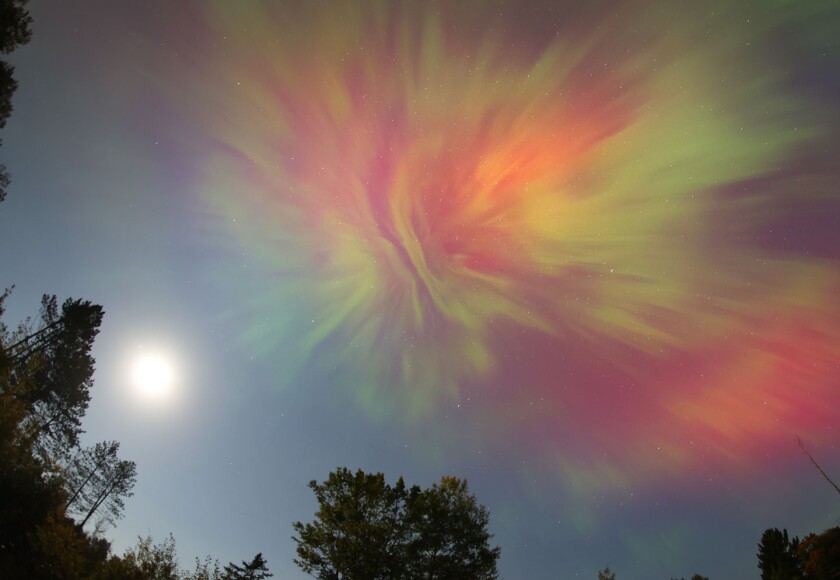
Oct. 17 – Full Hunter’s Moon. Since the moon will be “most” full around 6:30 a.m. Central Daylight Time on the morning of Oct. 17, it will appear full to the eye on both Oct. 16 and 17. Two for the price of one!
ADVERTISEMENT
Oct. 20 – Waning gibbous moon pairs up with the bright planet Jupiter in Taurus tonight.
Oct. 21 (a.m.) – Peak of the annual Orionid meteor shower from 1 a.m. till dawn. Under moonless conditions we might see 15 Orionids per hour shooting from near the bright star Betelgeuse above Orion's Belt. But this year a bright, waning gibbous moon will reduce that number by half.
Oct. 24 (a.m.) – Last quarter moon. Rises around 11:30 p.m. and stands approximately due south at sunrise. The moon will shine to the left of the planet Mars this morning.
Oct. 26 (a.m.) – Waning crescent moon in conjunction with Regulus, Leo’s brightest star. The moon will pass about 3 degrees above (north of) the star.

